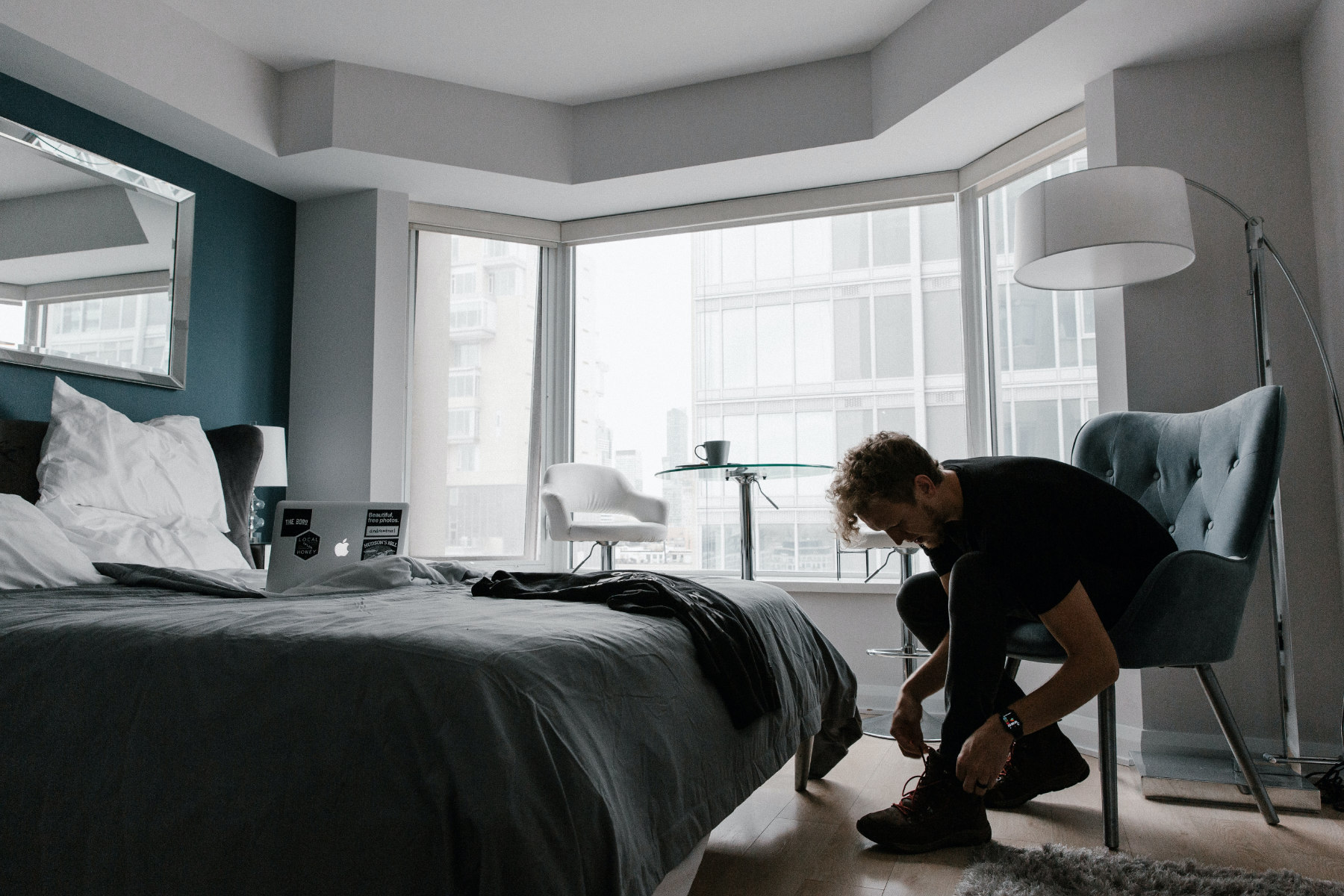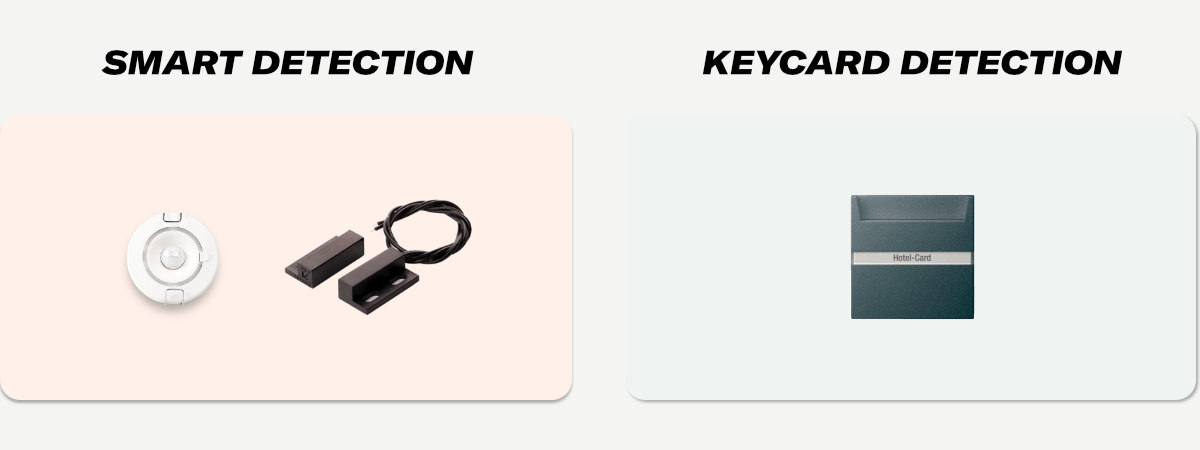
The automation features of 401-D and 401-D2 guest room management systems are welcome lights, energy saver, and automatic bathroom lights. Automatic bathroom lights require only a single motion sensor placed in the bathroom, but welcome lights and energy saver need access to reliable occupancy detection.
Occupancy detection
Welcome lights are triggered when a guest enters the room and they introduce the interior by slowly fading into a selected lighting scene, based on the time of day. Energy saver does the opposite and shuts down lighting and selected devices (e.g. sockets, curtains, or the HVAC unit) when the guest has left the room.
SMART DETECTION
The standard solution for guest room automation.
Smart detection requires a presence detector in the middle of the guest room, combined with a door sensor that catches door open and close events. This is the most reliable way to define occupancy within guest rooms.
The logic of occupancy detection is that when the door is closed, the room is observed for a set period of time. If no movement (or switch presses) happen during this period, the status of the room is set as unoccupied. If movement or switch presses are detected when the room is in an unoccupied state, the status of the room is immediately set as occupied, without triggering the welcome lights.
This means that with smart detection, a room can become unoccupied only after the door has been opened and closed and no movement has been detected after a set period from this.
KEYCARD DETECTION
The alternative implementation for guest room automation.
Sometimes it’s not possible to implement door sensors – in these situations, keycard detection is the way to go. Instead of sensors, a keycard holder is placed in the room, and its status is used to define whether the room is occupied or not.
When using keycard detection, there is unfortunately no way to prevent the guest from leaving their second keycard (or any card, actually) to the holder.
It’s also possible to implement guest room controls and management without these automation features. In this case, no sensors, detectors, or keycard holders are needed for the installation. The upside is that there are fewer hardware and installation costs but on the other hand the guest experience will lack the tiny bit of magic that our customers love.

Automatic bathroom lights
Whether you choose to go for smart detection, keycard detection, or no detection at all, you can always include a single motion sensor in the bathroom to enable automatic bathroom lights.
This feature is practically a hybrid of welcome lights and energy saver. In practice, when a guest enters the bathroom, the lighting activates automatically to a selected lighting scene (again, different lighting scenes based on time of day), and when there has been no movement within the bathroom for a set period, the lighting and selected devices will be automatically turned off.
Additionally, using the motion sensor in the bathroom makes the occupancy data even more reliable, as you’re now covering even more square meters within the guest room.
Conclusions
Why do we call the same component a motion sensor and a presence detector?
The traditional use case for a motion sensor is that when motion is detected, something else is activated. E.g. a motion sensor in a corridor detects a person and lights up the way for them.
In order to provide hospitality operators with accurate and reliable occupancy data, we decided to counter-intuitively use the lack of events as proof of absence. In this case, it just makes sense to call the component a presence detector instead of a motion sensor. A presence detector is never used for activating any lights or other devices.
Why not use only a single motion sensor for automation features?
Even the best motion sensors on the market can easily make mistakes and lose sight of guests. Even if the motion sensor is placed in the perfect position within the guest room. This means that a single motion sensor is simply not enough for hospitality operators who truly care about their guest experience.
You could theoretically use a single motion sensor for welcome lights and energy saver, but the chances for mistakes increase exponentially. You probably don’t want to wake up your customers at 3 AM because the welcome lights were triggered accidentally.
Which solution should I choose?
The ultimate solution for defining occupancy within a guest room is the combination of a presence detector, door sensor, and switches in the same system. This way, there is no room for errors. When smart detection is out of the question, prefer the good ol’ keycards.